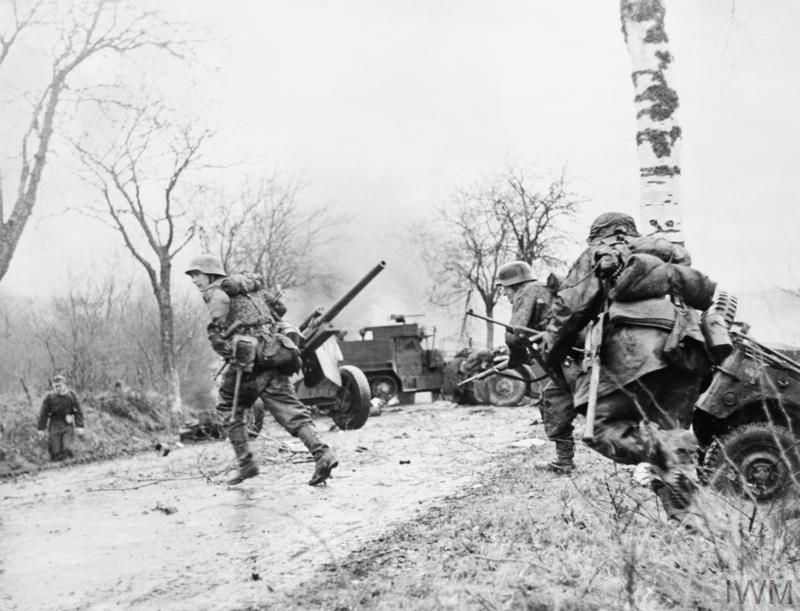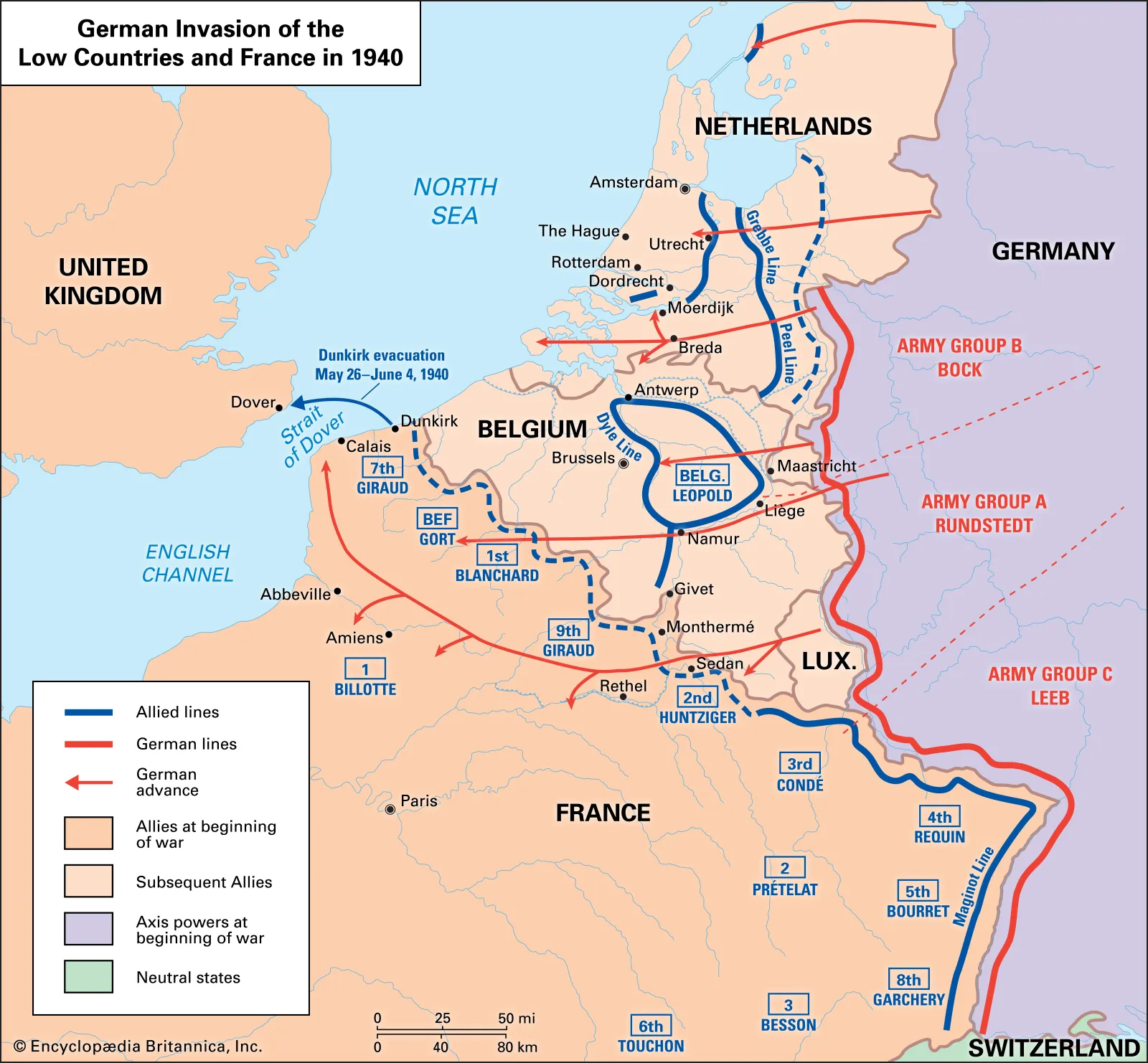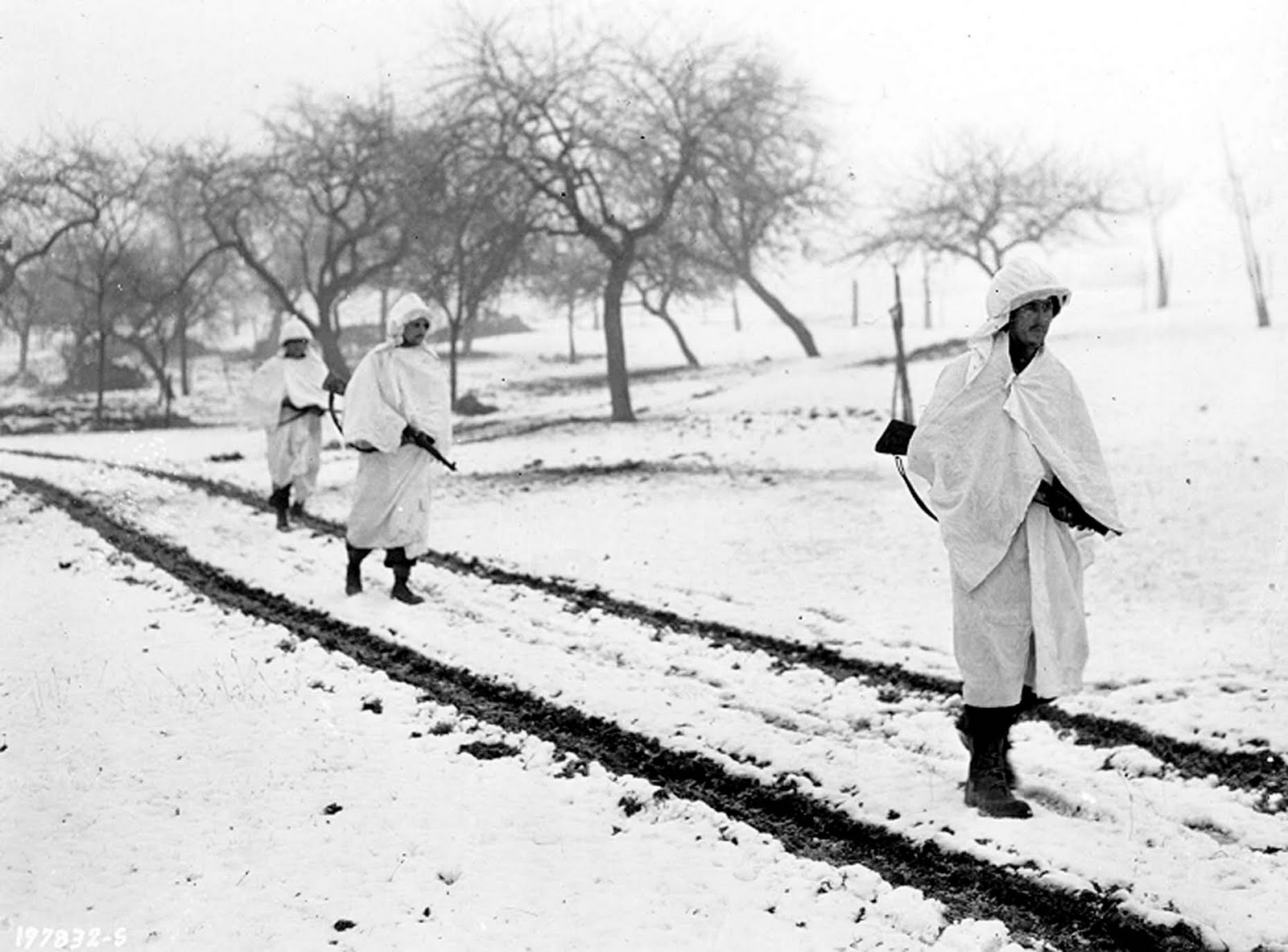Weather as a Weapon: Snow, Fog and Fate in the Battle of the Bulge
The Ardennes, mid-December 1944. In what locals still recall as the coldest winter in a generation, temperatures plunged below –7 °C and dense fog settled over snow-choked valleys. For the exhausted GIs guarding this “quiet sector,” the weather felt like a temporary reprieve; for Hitler’s planners it was camouflage, masking the largest German offensive in the West since 1940. Imperial War Museums
Hitler’s “Weather Prayer”
Operation Wacht am Rhein relied on the gloom. Panzer spearheads would crash through the thin American line while Allied aircraft—normally masters of the sky—sat grounded by cloud and sleet. In the first 48 hours that calculation paid off. Thunderbolt pilots thumbed uselessly at throttles, and U.S. outposts were overrun before radioing a warning. “The fog fought on the side of the Wehrmacht,” one German staff officer later wrote.
Frozen Foxholes and Fuel Lines
Bad weather, however, was a double-edged sword. German columns burned precious fuel while crawling along icy, one-track roads; snowdrifts swallowed half-tracks and Tiger tanks alike. American troops suffered frostbite in cotton field jackets, yet their logistic tail—stretching back to Antwerp—remained intact. German supply convoys, by contrast, stalled behind traffic jams of their own making. HISTORYW Britain
“Clear Up for Church” — 23 December
At dawn on 23 December the skies abruptly cleared. Within hours, Allied fighter-bombers stormed over the Salm and Ourthe Rivers, strafing road knots, blasting Panther turrets, and parachuting lifesaving supplies into the besieged 101st Airborne at Bastogne. Patton’s Third Army punched north the same day, its advance choreographed by roaming “cab-rank” fighter patrols overhead. Warfare History NetworkNational WWII MuseumThe History Place
January Thaw and German Collapse
The respite for the Luftwaffe lasted barely a week; once the weather turned, Allied air forces flew more than 15,000 sorties, eviscerating German armour and fuel dumps already starved by the freeze. By 16 January 1945 the twin prongs of Patton’s and Hodges’s armies met at Houffalize, erasing the “bulge.” Hitler’s last strategic reserve lay frozen and burning in the Ardennes snow.
Verdict: Who Benefited?
In Mark Felton’s words, weather “first blinded the eagle, then bared the serpent.” The initial fog undeniably favored the Axis, granting surprise and a fleeting operational edge. Yet those same blizzards hampered German logistics, and once skies cleared the Allies’ industrial and air superiority turned the climate into an ally. Overall, the brutal winter proved a pyrrhic friend to the Germans and a decisive—if delayed—asset to the Allies, accelerating the Reich’s defeat in the West.


